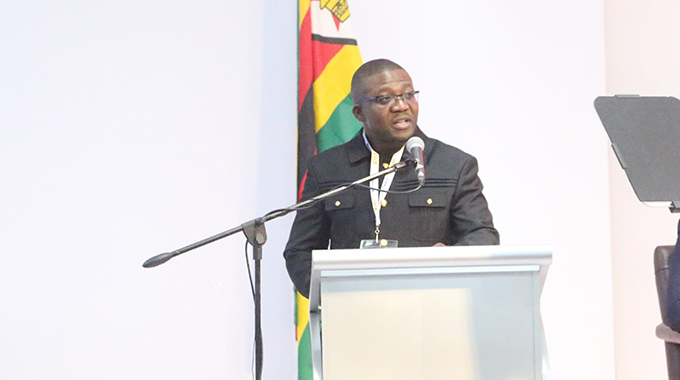Government sets aside $56, 4 billion for urgent resuscitation of the National Railways of Zimbabwe

Nqobile Bhebhe, [email protected]
GOVERNMENT will set aside $56, 4 billion towards the urgent National Railways of Zimbabwe (NRZ) rehabilitation needs while further pledging its support towards the parastatal’s recapitalisation roadmap through the access of lines of credit for the procurement of locomotives, wagons, track infrastructure and signalling equipment.
NRZ has in recent years been knocking on the doors of many potential investors, pitching various investment projects in an attempt to modernise services and operations.
Lack of investment, mainly in freight wagons and the rail system, has negatively impacted NRZ over the past two decades, reducing its cargo-carrying capacity from an average of 18 million tonnes per annum in peak years in the late 1990s.
The entity is targeting to increase the capacity of its freight from the current 2,5 million annually to 6,5 million by 2025 to ensure the entity optimally plays its role as a key economic enabler.
The strategic parastatal is on a recovery trajectory.
Outlining the proposed 2024 national budget last week, Finance, Economic Development and Investment Promotion Minister Prof Mthuli Ncube highlighted that improved rail services support economic growth by lowering transportation costs, particularly for the mining and agriculture sectors, which require bulk transportation of raw materials and finished products. He said Investments in the rail network will arrest further deterioration of road infrastructure due to haulage trucks as well as abnormal loading.
However, he said the country’s rail system is becoming a bottleneck to the seamless railway service within the region, given its interconnectedness with other national networks along the Beira/Maputo corridors to Mozambican ports and North–South corridor linking countries in the north and ports in the south such as Durban and Richards Bay in South Africa.
He indicated that the 2024 national budget will, therefore, support renewed efforts to capitalise the NRZ with $56,4 billion having been set aside to meet urgent rehabilitation needs.
“Government is also supporting the NRZ recapitalisation roadmap through the access of lines of credit for the procurement of locomotives, wagons, track infrastructure and signalling equipment.
“The NRZ is also expected to engage the private sector users of the railway system on options for joint ventures.”
Recently, the parastatal indicated that it is set to embark on a new initiative partnering with private players who are expected to bring in their own locomotives and wagons to augment the parastatal rolling stock in a bid to enhance its capacity in the face of increasing demand for its services.
The move will also result in most of the bulk goods being moved by rail, resulting in the easing of congestion of the country’s major roads where a good amount of freight has been directed in the past few years.
The initiative, to be implemented under a model known as Open Access, will address capacity challenges and provide an efficient bulk logistics solution to the expanding Zimbabwean industries.
Already, three companies, including a South African one, have expressed interest in the initiative and will be on board from January 1, 2024.
The revitalisation of the NRZ is expected to enhance logistics efficiency across various economic sectors while easing the strain induced by heavy cargo transportation on roads.
This comes at a time when the massive transformation of the country’s economy under the Second Republic has necessitated urgent collaboration between the Government and the private sector players to scale up maintenance, rehabilitation, and expansion of the entire transport infrastructure system to unlock more economic opportunities through improving linkages between new and old productive zones with key domestic and international markets.
Zimbabwe’s railway network system stretches 2 760 kilometres, but due to the waning of the infrastructure over the years, the rail network has cautions (the equivalent of potholes in the road network) totalling 64 and covering a distance of more than 254 km.
The knock-on impact of the cautions in the railway network is that they cause derailments and operational inefficiencies that cause delays in the movement of trains.












Comments